the st. john's bible, part 2

I'm finally continuing from my previous post about the spectacular St. John's Bible! You can read the first part here:

By the end of that post, I was simply quoting from the descriptions of each page in the small museum where they keep the bible on display. Here's another example of that:
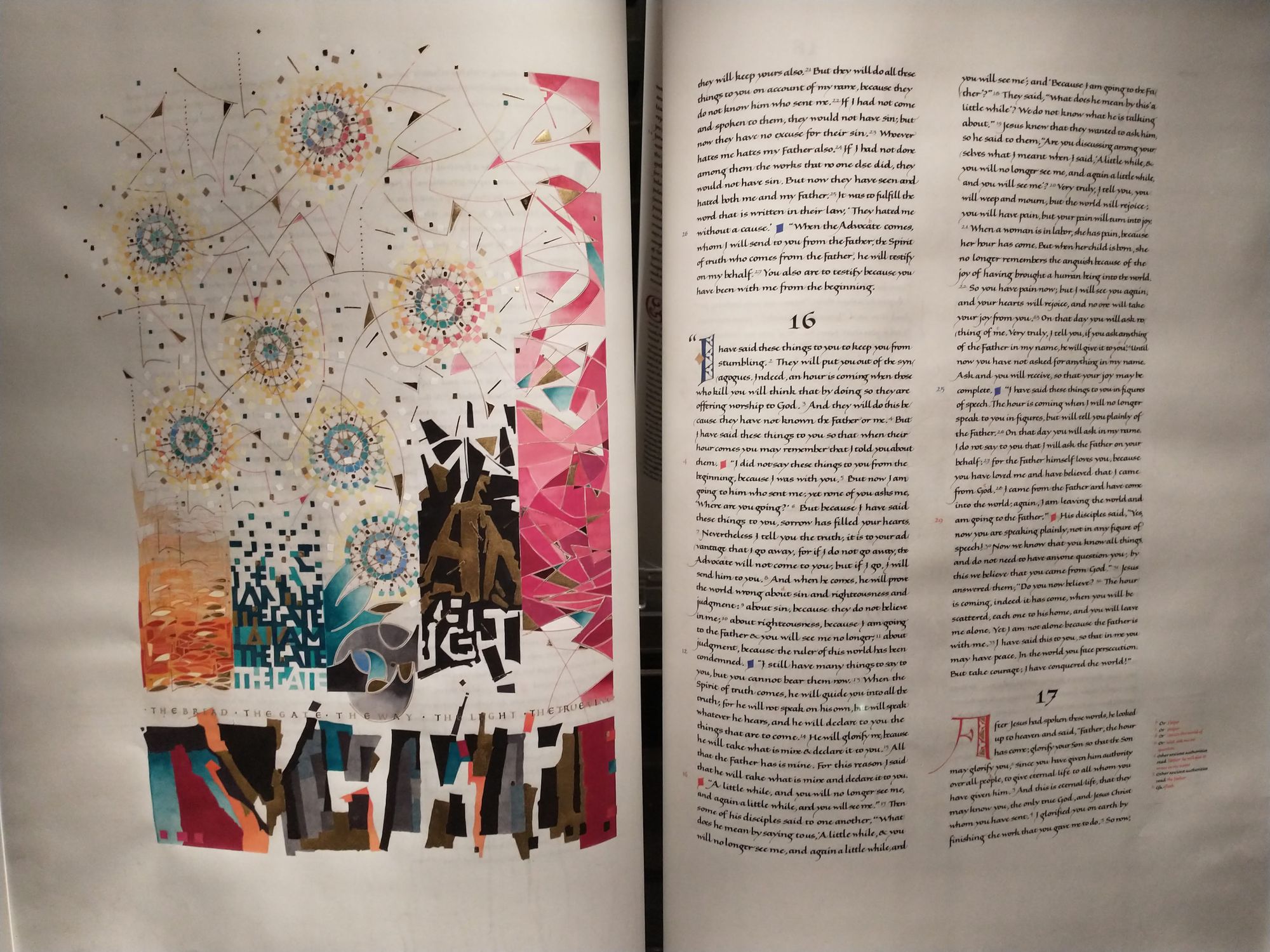
Since I made the last post, one of my friends informed me that one can actually see the entire bible with it's artistic captions online. See it here:

So this post will be much shorter and, I will share some of the more interesting things that you wouldn't be able to see or know unless you go see it in person.
On some of the pages, you'll find hyperrealistic paintings of insects completed by the venerable Chris Tomlin (not the singer). You can see some details of his work here (all of which were found on the Library of Congress Website at https://www.loc.gov/exhibits/stjohnsbible/stjohns-exhibit.html):

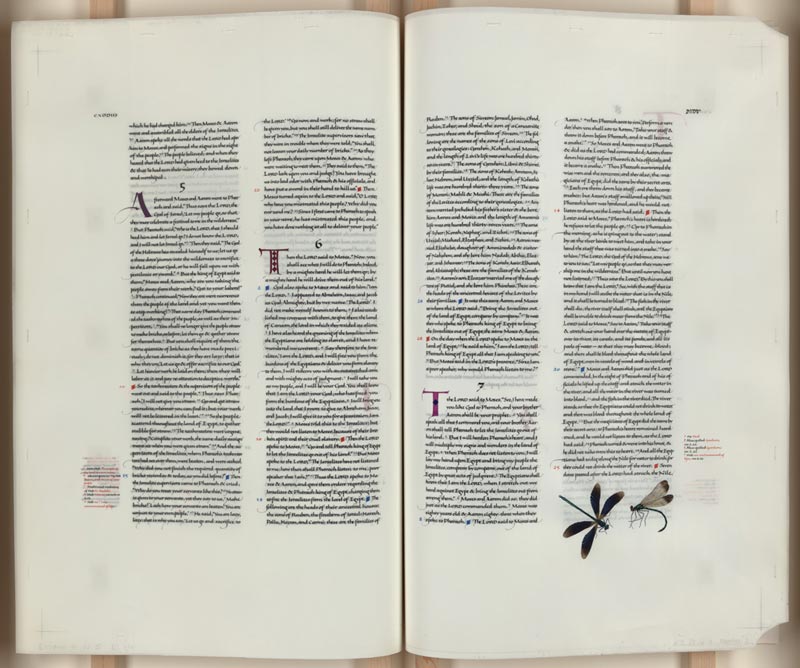
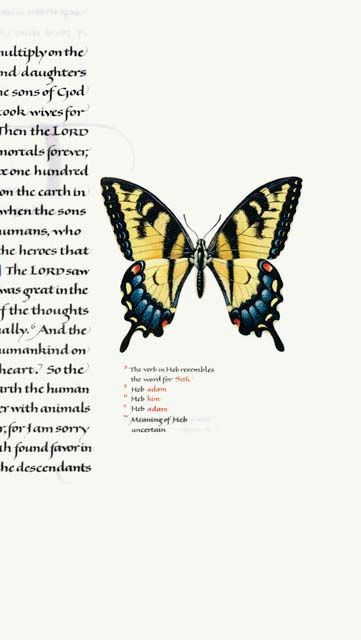
As you can tell from the extreme level of detail you see, each page of the St. John's Bible took a long time to make. What isn't immediately obvious is that the black text of the NRSV that the calligraphers laboriosly copied by hand was the next-to-last thing to be completed on each page (the drop caps, completed by Donald Jackson all in one day according to the docent, were the last thing), after the illuminations and after all the other painting was done. This means that if one of those scribes makes a mistake, they have to burn the entire sheet (which contains four pages of the bible since they're written front to back) and start completely over from scratch... JUST KIDDING!
When the scribes made a mistake, they took the opportunity to turn it into something beautiful:
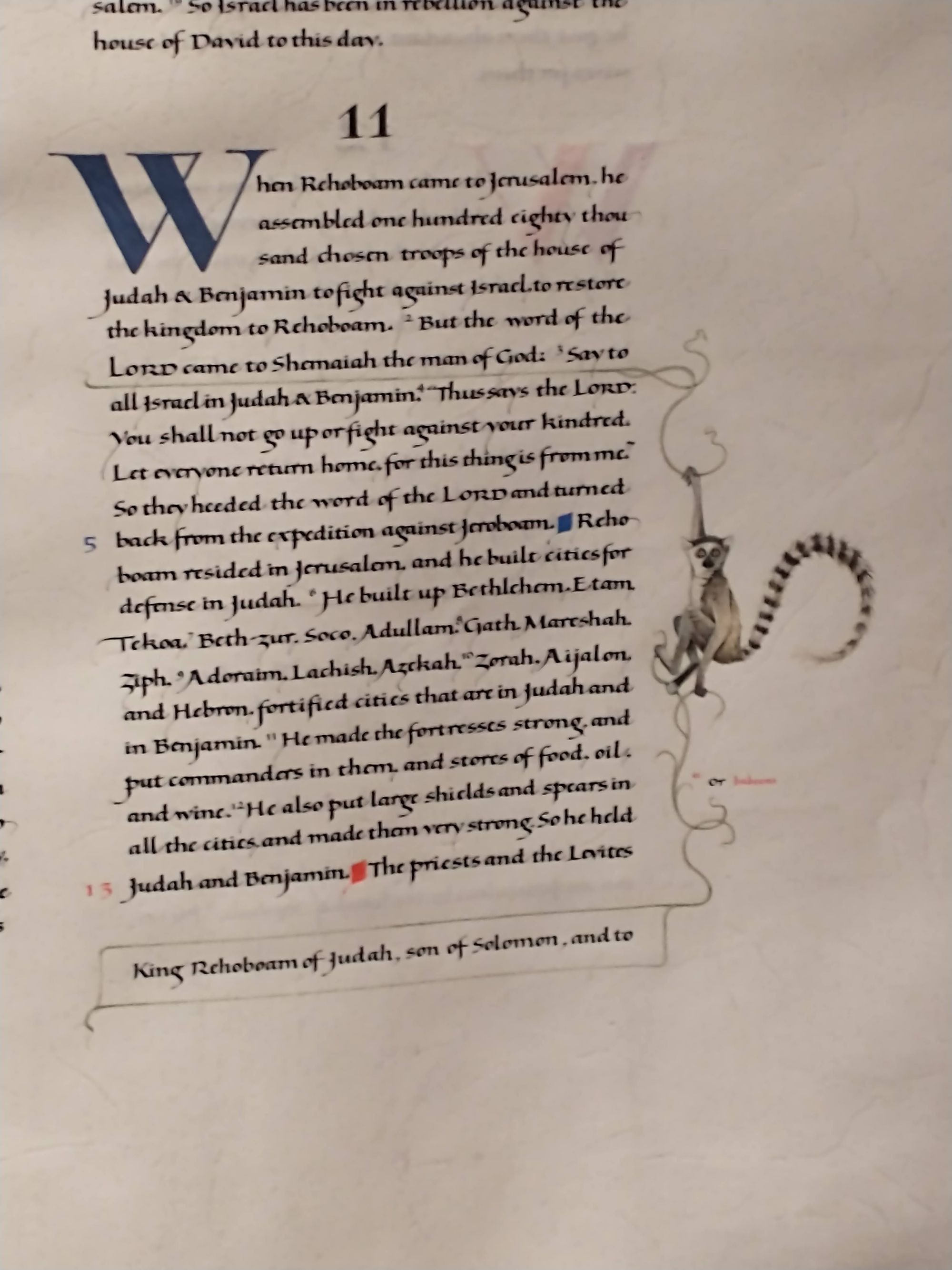
The little lemur in the picture above shows where the skipped line is meant to be. Just like ancient scribes, the modern scribes of the St. John's Bible use a "signe-de-renovoi" (a sign of return) to show where the missing word or line belongs.
According to the museum display, there were only 9 out of 1,130 hand-written pages were an error could be found. Thats approximately 0.80% of the pages of this bible. That's very impressive, especially when you consider that every one of those errors was fixed in a way that increased the beauty of the text with new artistic illuminations. Here's a quote from the museum:
While some may think these errors should be corrected and the pages redone, the folios with these wonderfully human "fingerprints" have become some of the most enjoyed pages of the project thus far. As humans, we should embrace our fallibility, and the things we make should celebrate that reality as well. To err is human, to correct is divine.
According to the records, all six scribes for the St. John's Bible have made at least one omission of a line.
I'll wrap up with this post to show you something else that's really cool aobut the museum: you can see an authentic Torah scroll from an era that I can't remember. It helps us remember where this all started.
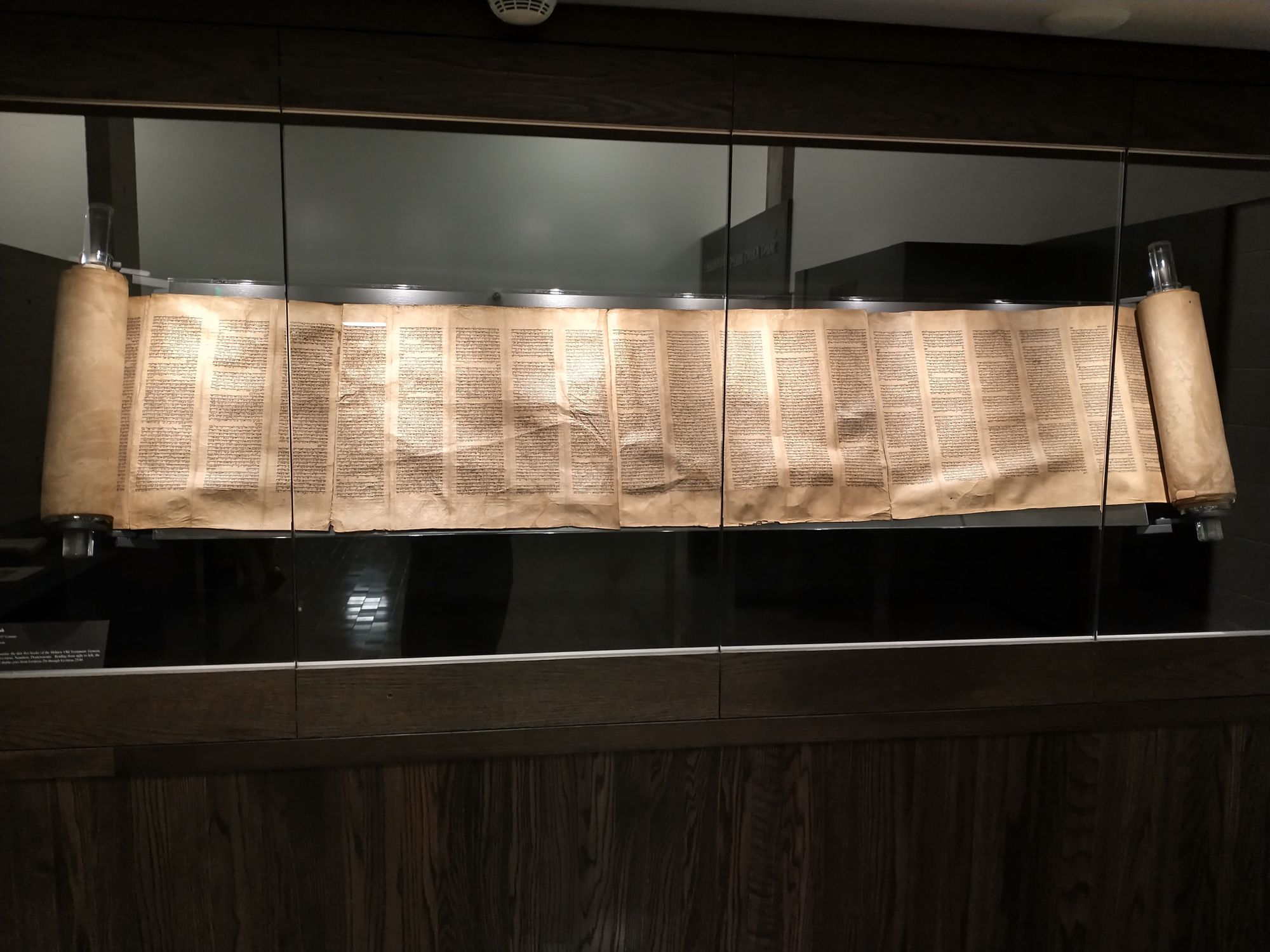
subscribe to get email updates and support my work
Click the link below or the subscribe button at the bottom of the page to support my work and get an email every time I make a new post!


